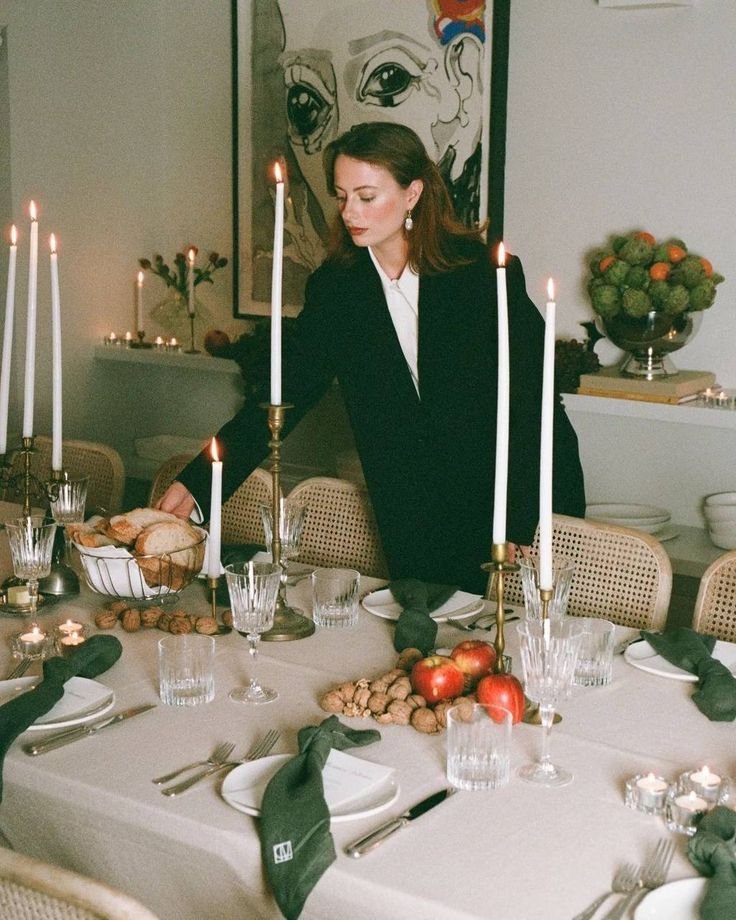There are dinners, and then there are bespoke dinner parties. The latter, rare, coveted, unforgettable, a world built for one night where every glass, every gown, and every guest feels as meticulously chosen as pieces in a gallery exhibition. A true dinner party isn’t just a gathering; it can be an art form, a cultural statement, or even a quiet rebellion against algorithms, noise, and speed.
Hosting this kind of evening isn’t about filling a table but about carefully selecting pieces that will make the table come alive. Its anatomy lies in the curation: a guest list that hums with potential, lighting that seduces, tablescapes that tells a story, cuisine that prompts dialogue, and an atmosphere so refined it feels almost otherworldly.
The soul of any evening starts long before a candles is lit or the champagne is poured. It starts with the guest list. Unlike casual dinners where convenience reigns, an intentional gathering prioritizes harmony and cohesion.
History’s greatest hosts knew this well. Truman Capote’s legendary Black and White Ball in 1966 is remembered less for its chandeliers than for its chemistry. Frank Sinatra brushed shoulders with Babe Paley, and Andy Warhol sparred with Norman Mailer. The modern dinner party carries the same truth. The story unfolds not in décor but in company.
If the guest list is the heart of the evening, lighting is its soul. A true host knows light is not just decoration. A well-lit room makes a difference. A dozen tapers in Baccarat candlesticks, low amber pools from Murano lamps, or the quiet flicker of tea lights across mirrored surfaces all create intimacy without words.
The table is the stage, and every guest steps into it at some point in the evening. Today’s most evocative tablescapes move beyond rigid matching sets to layered narratives. A Dior Maison charger paired with heirloom silver, mismatched crystal, and asymmetrical florals spilling across monogrammed linen creates a scenes that feels curated yet alive.
Every element should tell a story. The table, like the best fashion, is less about perfection and more about intention, a space where beauty feels personal not performative.
The most memorable menus serve as cultural bridges and memory keepers. Food here gives rhythm to the evening. At its finest, cuisine can also become a story in itself. Nostalgia woven into dishes, paired with avant-garde touches from Michelin-starred chefs, allows the table to travel across time and geography.
If the dinner is an orchestra, the host is its conductor. They are never frantic, never ornamental. Instead, they move gracefully, ensuring glasses are refilled, introductions are made, and conversations flow. Like Elsie de Wolfe or Lee Radziwill before them, today’s great hosts understand that hosting is authorship, the shaping of an experience for all guests.
The dinner party has reemerged as an act of intentional luxury. It resists haste. It resists disposability. It elevates connection into an art. More than spectacle, these evenings are cultural touchstones. They launch ideas, bridge friendships and create memories that no photograph can fully capture.






